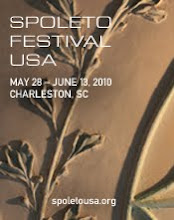
(I noticed this posting from early in the week had some overrun text issues, so I'm posting it again. If you couldn't read, it here it is; if you missed it, here it is. I think it's important news.)
For the past several weeks most of us having been watching and reading with great interest about the protests in Iran. But in a recent interview on National Public Radio, a former CIA field officer for the Middle East said “We know virtually nothing about Iran.”
Then there’s Matthew Canepa, a College of Charleston art history professor. He knows a lot about Iran, although his expertise is in the Iran that existed from 333 B.C. to 663.
Canepa just received an $80,000 award to complete research for his book "Iran between Alexander and Islam." The harles A. Ryskamp Fellowship from the American Council of Learned Societies is funded by the Andrew Mellon Foundation. “This book will be the first in-depth study in decades,” said Camepa, who has been at the college for five years, “and is especially important at a time when Iran is playing an ever increasing role on the world stage.”
Since the 1979 revolution which overthrew the U.S.-backed Shah in 1979, access to Iran has been difficult and scholarship has lapsed. Canepa is a part of a new generation exploring the region. During the past three years Canepa has done research in Turkey, Iran, and India and this year and next he’ll go back to Turkey as well as Uzbekistan and Turkmenistan all of which were part of the vast Iranian empire. Developments in the Mediterranean area and Western Europe are known as are those in India and China.
“Iran has been the black box where everything that doesn’t fit came from,” Canepa said. During the time he’s looking at ideas and images moved into and out of the
Iranian kingdom which included places and people as widely separated as today’s Saudi Arabia and Georgia. Ideas developed during this time about divine rights of rulers have continued unabated since including the iron-handed Shah and the current regime, he said.
“I can’t think of a time when Iran was not ruled by a despotic regime,” said Canepa, who holds a doctorate from the University of Chicago.
The current protests in Iran are one of the few times such a thing has happened in more than 2,000 years, he said.
“It is an important uprising,” he said.
The period he’s examining includes the Arsacid, Sasanian and Kushan dynasties which began after the death of Alexander the Great who had conquered the region and the rise of Islam and its rapid sweep through the area. It is, he said, “one of the most important, yet least understood periods of Iranian history.”
This fall his book “The Two Eyes of the Earth” will be published by the University of California Press and will be the first to analyze the artistic, ritual and ideological interactions between the Roman and Sasanian empires.
Not one to just toot his own horn, Canepa is a cheerleader for the College of Charleston
art history department – the only free-standing art history department
in South Carolina and one of the few in the Southeast.













Dear Professor,
ReplyDeleteCould we have a chat about the putto figure on the Bishapur II and III reliefs ?
My name is Robert.
robertmuyldermans@hotmail.com